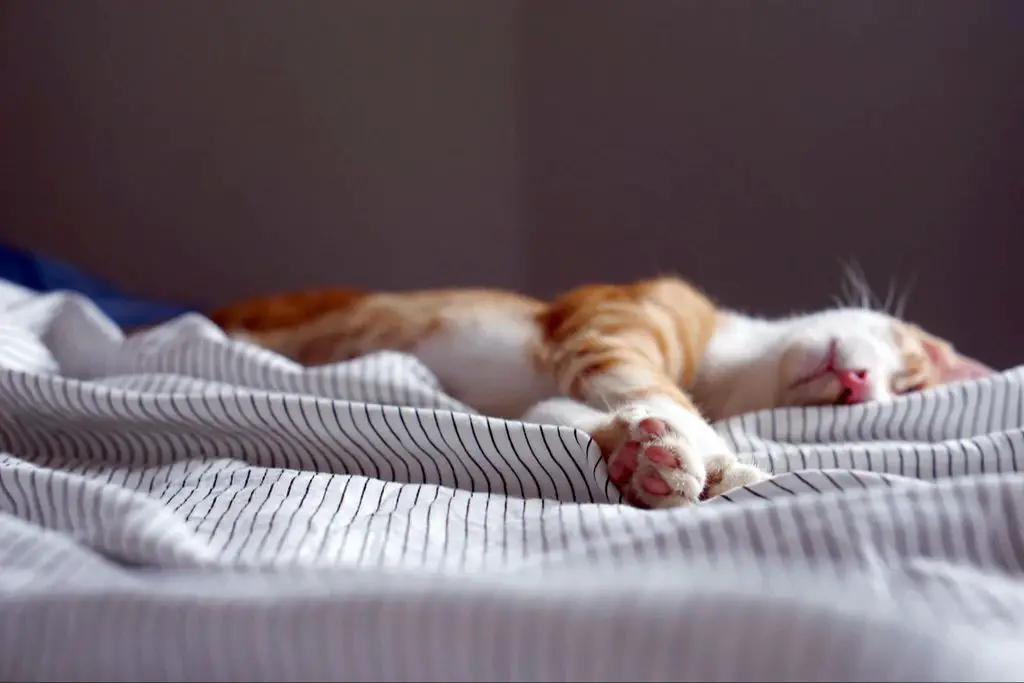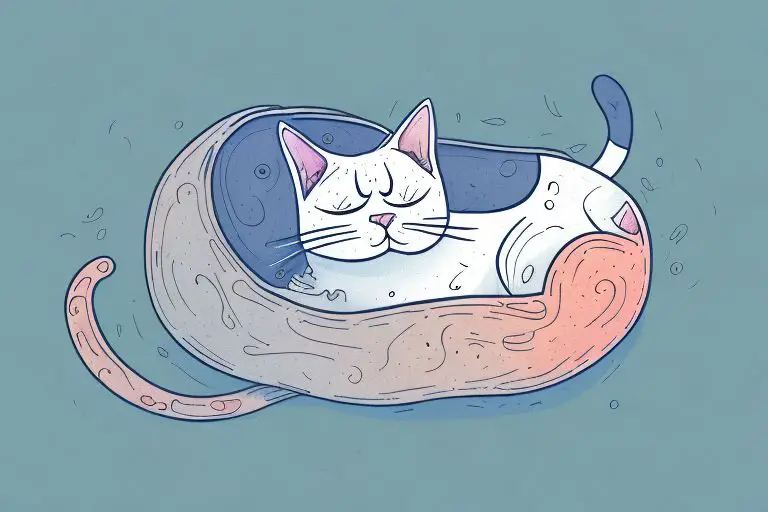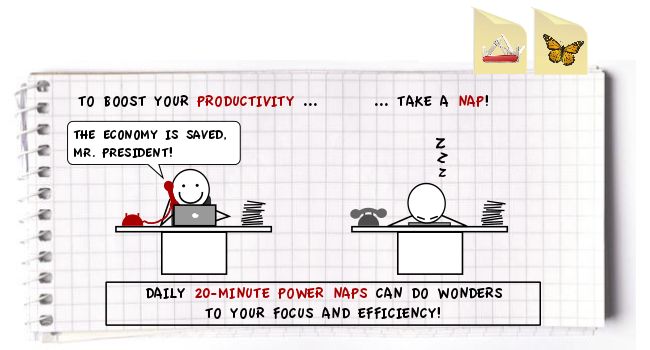A cat nap is defined as a short nap during the day that lasts anywhere from 10 to 30 minutes. Cat naps get their name from the short periods of sleep cats often take throughout the day. These brief naps provide benefits like improved alertness, memory consolidation, and creativity without leaving you feeling groggy like longer naps sometimes can. Studies indicate that cat naps can boost cognitive performance, judgment, and motor skills. However, they may not be effective for everyone. Knowing how to optimize the timing and duration of cat naps could help maximize the benefits.
History of Napping
The practice of taking short daytime naps dates back to ancient civilizations. The Ancient Egyptians saw napping as a way to connect to the gods through dreams (1). In Roman times, a short afternoon nap or siesta was a common practice across all social classes (2). The term “cat nap” came about in the late 1800s referring to the short light naps cats often take throughout the day (3).
Famous nappers throughout history include Albert Einstein, Leonardo Da Vinci, Winston Churchill, and John F. Kennedy (4). Many major figures in history saw napping as a way to boost creativity, refresh the mind, and increase work performance.

Sources:
(1) https://www.collegeraptor.com/find-colleges/articles/tips-tools-advice/napping-facts-hint-take-more/
(2) https://www.theguardian.com/lifeandstyle/2021/aug/27/from-aristotle-to-einstein-a-brief-history-of-power-nappers
(3) https://juvea.com/blogs/sleep-better/the-power-of-a-15-minute-nap-unveiling-the-history-and-benefits
(4) https://www.collegeraptor.com/find-colleges/articles/tips-tools-advice/napping-facts-hint-take-more/
Ideal Nap Duration
Research shows that the ideal nap length for most adults is between 20-30 minutes (1, 2). This allows you to get the benefits of a nap, such as improved alertness and memory, without feeling groggy afterwards.
During the first 30 minutes of sleep, you transition from light sleep into deeper, slow-wave sleep. Waking up during deep sleep can leave you feeling disoriented. A nap of 20-30 minutes allows you to get light, restorative sleep but avoid falling into the deeper stages (1).
Studies have found a 20-30 minute nap may boost cognitive performance and motor skills for 1-3 hours afterwards (2). Naps longer than 30 minutes can lead to sleep inertia upon waking, where you feel sluggish for 30 minutes or more afterwards.
If you need more sleep, a short nap of 20-30 minutes can provide a quick boost in alertness and performance. However, for longer-term health benefits, aim for the recommended 7-9 hours of overnight sleep.

Sources:
(1) https://www.sleepscore.com/blog/how-long-should-i-nap/
(2) https://www.sleepfoundation.org/sleep-hygiene/napping
Benefits of Napping
Napping has been shown to provide several benefits related to mood, productivity, and health. According to a study by Johns Hopkins Medicine, napping can improve your memory and ability to recall words [1]. Naps between 30-90 minutes were associated with better memory compared to no nap or longer naps.
Short daytime naps can also enhance cognitive performance like alertness, reaction time, and mood, according to research published in PLOS One [2]. Participants who took a nap during the day showed improvements in energy, motivation, and ability to handle complex tasks.
Other health benefits of napping include reduced fatigue, improved relaxation, and better cardiovascular health. According to WebMD, napping may lower blood pressure and decrease stress, helping protect your heart [3]. Overall, brief naps can provide a quick boost in mood, energy, productivity, and wellbeing.
Downsides of Napping
While napping offers many benefits, it does have some potential downsides to be aware of. One of the main concerns with napping is that it can disrupt your normal sleep schedule, especially if taken too late in the day. According to the American Heart Association, “Napping too long during the day, Kushida added, can disrupt overall sleep patterns. ‘It’s generally recommended to maximize sleep at night,’ he said” (source). If you nap for too long or too close to bedtime, it can make it harder to fall asleep and stay asleep at night. This can lead to sleep deprivation over time if your nighttime sleep suffers consistently.
Experts recommend avoiding naps longer than 30 minutes and not napping after 3 p.m. to prevent interference with your regular sleep-wake cycle. Keeping naps brief and early in the day allows you to gain the benefits of napping without negatively impacting your ability to sleep well at night. If you currently struggle with sleep problems, it’s best to consult your doctor before introducing regular napping to ensure it won’t exacerbate existing issues.
Who Benefits Most From Napping
Certain groups tend to benefit the most from taking short naps during the day:
Shift workers – People who work overnight or rotating shifts often have disrupted circadian rhythms, which can lead to fatigue. Napping can help improve alertness and performance for those who work irregular hours.
Frequent travelers – Long flights across time zones can disrupt normal sleep cycles. Napping can help counteract drowsiness and jet lag.
Adolescents – Teenagers naturally have later circadian rhythms and need more sleep. Napping allows them to get extra rest needed for growth and development.
Napping is especially useful for those whose nighttime sleep is reduced or disrupted. It provides a boost in energy and cognitive functioning. However, for people who get adequate regular sleep, the benefits of napping are less pronounced.
Tips for Effective Napping

To get the most benefits from your cat nap, pay attention to your sleep setup. Here are a few tips for maximizing nap effectiveness and avoiding sleep inertia:
- Take naps in a quiet, dark place with little noise or light to foster sleep.
- Make sure the nap environment is a comfortable temperature, not too hot or cold.
- Use curtains to block outside light and consider wearing an eye mask.
- Choose a comfortable place to lie down, like a couch or bed. Side sleeping helps avoid neck pain.
- Set an alarm to wake up after 10-20 minutes to avoid entering deeper slow-wave sleep.
- Get up slowly after waking, take a few deep breaths, and move around gently to transition smoothly.
By optimizing the nap environment and duration, you can wake up feeling recharged instead of groggy and disoriented.
Nap Alternatives
While napping offers numerous benefits, it may not always be feasible during a busy workday. In cases where napping is not an option, there are some alternatives that can provide a quick energy boost (Sources: Inc, Medium).
Drinking a cup of coffee can help increase alertness thanks to the caffeine. However, coffee should be consumed carefully as too much can lead to jitters and disrupted sleep at night. Enjoying a short walk outdoors can also be invigorating by getting the blood flowing and providing a mental break.
Meditation and deep breathing exercises are another excellent way to refresh during the day without sleeping. Just five to ten minutes of meditation can lower stress and leave people feeling more focused. Dynamic stretches and bodyweight exercises like squats or pushups can also boost energy levels by increasing circulation and heart rate.
While not as restorative as actual sleep, these alternatives can leave people feeling more alert and focused when an afternoon nap is not feasible. They are easy ways to take a quick break and stimulate productivity when you have a busy schedule.
Famous Nappers
Throughout history, many influential figures and world leaders were known to take naps and saw the benefits of napping on productivity, focus, and overall health. Here are some famous nappers from history:

Napoleon Bonaparte, the French military leader and emperor, was known to take frequent naps in order to refresh his mind for battle. He even had a portable bed made so he could nap during military campaigns.
Winston Churchill, the legendary British prime minister during World War II, napped every afternoon to recharge. He is quoted as saying “Nature has not intended mankind to work from eight in the morning until midnight without the refreshment of blessed oblivion which, even if it only lasts twenty minutes, is sufficient to renew all the vital forces.”
Albert Einstein, the renowned physicist, napped often and claimed it helped stimulate his creative thinking. He would nap on his desk, couch, and even while sailing.
Thomas Edison, inventor of the lightbulb and founder of General Electric, power napped to boost his productivity. He considered napping “the best medicine for refreshing the body and the mind.”
Eleanor Roosevelt, former First Lady and humanitarian, napped before giving speeches in order to be rested and at her mental best.
Salvador Dali, the famous surrealist artist, slept in intervals throughout the day for inspiration. He even developed a technique called the “slumber with a key” where he would sit in a chair with a plate on the floor. When he fell asleep, the plate would clatter and wake him to capture dream images.
Conclusion
When done right, short naps of 10-30 minutes can provide a number of benefits. Napping has been shown to improve mood, alertness and performance. It can also aid memory and learning. However, longer naps may leave you feeling groggy and interfere with nighttime sleep quality. The ideal nap duration is around 20 minutes. Not everyone benefits equally from daytime napping. Young adults, shift workers, and sleep-deprived individuals tend to gain the most from incorporating a nap into their daily routine. To maximize benefits, it’s best to nap in the early-mid afternoon when we experience a natural dip in alertness. Be sure not to nap too close to bedtime. When napping isn’t feasible, alternatives like meditation, going outdoors or having a caffeine drink can provide a similar pick-me-up effect. In sum, brief daytime naps, when practiced strategically, can be a healthy habit for improved well-being and productivity.

